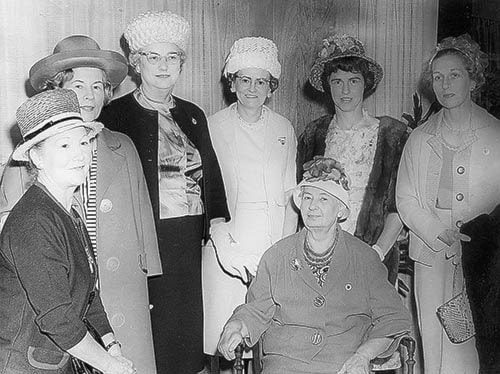By Allison White
From the top hat to the bowler to the fascinator, the Maple Ridge Museum’s exhibit of hats from the 1870s to the 1970s also discusses the most popular types throughout history.
Initially, hats were worn as protection from the elements or similar to the modern day helmet, to protect against debris.
One of the first hats was found painted on a tomb, showcasing a straw hat.
Other early hats came from ancient Greece, which dates to the first known hat with a brim.
Etiquette and formality have always played their part in hat wearing.
Women were expected to have their heads covered by hoods, veils, kerchiefs and it was not until the 17th Century that women’s headwear started to emerge apart from men’s hat fashions.
“Hatmaking” or “millinery” is the manufacturing of hats and headwear.
A milliner (historically female shopkeepers) imported garments and apparel and sold them in their shop.
The word has evolved to describe a person who designs and makes hats, derived from Milan, where many of the goods were imported.
At the turn of the 20th Century, both men and women changed their hats dependant on their activity, and for many women it would be several times a day.
Etiquette articles suggest that it would be a disgraceful act to venture out of the house without a hat or gloves, even in one owns garden.
It did not matter if you were poor or rich, old or a child. Whatever the status, a person wore a hat.
In fashion terms, hats are a very noticeable accessory because the onlooker’s attention is first drawn to the face.
Once the First World War (1914-18) began, fashion was influenced by the new wartime employment activities, and the need for more practical utilitarian dress was imperative.
Uniforms became ubiquitous, as women were now doing jobs once done by men and every job had a uniform.
When the Second World War (1939-45) started, hats became less practical as barriers of etiquette broke down and their wearing decreased.
Hats that were worn were generally useful, as part of a uniform or often homemade knitted hats, berets and hoods.
Women fashioned hats on the spot tying headscarves into an instant hat, such as a turban.
After the Second World War, much of the fashion was ‘ready-to-wear’ and it became less common to wear a hat, as attention was more turned towards hair, wigs and hairdressers who coloured, back-combed and sprayed women’s hair into a wide variety of styles.
By the 1980s and 1990s, there was a rival of interest in wearing hats as a fashion statement. However, no longer was it seen as a form of etiquette.
This photograph from the museum archive from the 1960s shows a group of women attending an auxiliary club meeting in Maple Ridge, wearing the fashion day-wear hats.
Today, typically, such elaborate fashion would not be worn to a meeting. ‘Business casual’ extends to blue jeans, and hats, gloves are reversed for special occasions like weddings.
Allison White is the curator of the Maple Ridge Museum.
